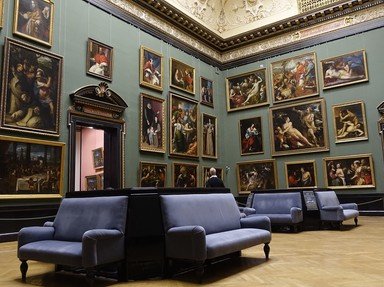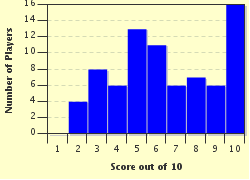Quiz Answer Key and Fun Facts
1. We begin our tour with one of the world's most recognizable paintings, "The Birth of Venus" by one of the masters Florentine School during the Early Renaissance period. Who is the artist?
2. Painted in the 1430s, "Coronation of the Virgin" is a masterpiece by the artist born Guido di Pietro in the Florentine Republic. Who is this Early Italian Renaissance painter?
3. Painted in the 1470s, "Annunciation" is an early work by a polymath and one of the few true geniuses who ever lived. Widely considered to be amongst the greatest painters of all time, he epitomizes the ideal of the Renaissance. Who is this artist?
4. Painted in the early 1510s, "Perseus Freeing Andromeda" is by another Early Renaissance artist from Florence. One of his earliest jobs was to assist his mentor, Cosimo Rosseli, painting the Sistine Chapel. Who is this artist?
5. Painted between 1518 and 1519, "Portrait of Pope Leo X and his cousins, cardinals Giulio de' Medici and Luigi de' Rossi" is a work by one of the great masters of the High Renaissance period. A prolific artist, many of his best known works can be seen on the walls of the Vatican, where he has his own rooms named for him. Who is this artist?
6. Dating to 1504, "Adoration of the Magi" is one of the best works by this German Renaissance artist. He established his reputation at an early age with his woodcut prints. In his later years he was the primary artist for Holy Roman Emperor Maximilian I, King of the Romans. Who is this artist?
7. Painted in 1783, "Portrait of María Teresa de Vallabriga on Horseback" is a stunning portrait by the most important Spanish artist of late 18th and early 19th centuries. Court painter to Charles III, Charles IV and Ferdinand VII, portraits of the Spanish royals and aristocracy make up a large portion of his lifetime's work. Who is this artist?
8. Dating to the 1470s, this spectacular oil on wood triptych is known as the "Portinari Altarpiece". He was one of the most important Early Netherlandish painters although, sadly, this is one of the few examples of his work that has survived. Who is the artist?
9. Painted in 1595, "Bacchus" is by an Italian artist whose use of light had a significant effect on the style of the Baroque period. Jailed on numerous occasions, he even had a death sentence imposed upon him by the Pope.
10. Painted between 1627 and 1630, "The Triumphal Entry of Henri IV in Paris (March 22, 1594)" is by an artist whose extravagant Baroque style emphasized movement and colour. His body of work includes altarpieces, portraits, history paintings of mythological and allegorical subjects and numerous landscapes. Who is this Flemish artist?
Source: Author
EnglishJedi
This quiz was reviewed by FunTrivia editor
looney_tunes before going online.
Any errors found in FunTrivia content are routinely corrected through our feedback system.

